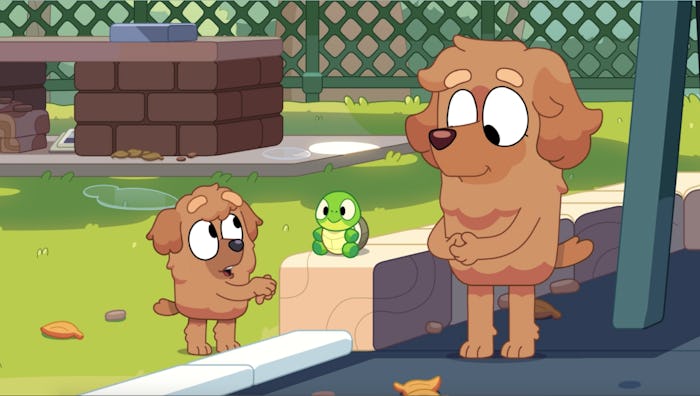Viral

Meet Dougie, Bluey’s First Deaf Character Who Uses Sign Language
“Turtleboy” isn’t about disability or deafness — the fact that Dougie is deaf is incidental, and that kind of casual representation has been well-received by fans.
Some of the best moments in Bluey is when the show takes everyday family and parenting moments and elevates them into the sublime. (Who can forget “Sleepytime,” setting a child’s dream and relationship with her mother to Gustav Holst’s “Jupiter”?) But in “Turtleboy,” one of the most recent episodes from Season 3 to drop on Disney+, we are offered a moment that’s sublime in its casual simplicity: a Bluey character using sign language.
“Turtleboy” follows Bandit and Bingo finding a lost toy at the park. Bingo has fun playing with Turtleboy, but when it’s time to leave, Bandit tells her she can’t take him with her: “It’s not the done thing, mate,” he says, noting that Turtleboy’s owners might be back for him. Dismayed, Bingo leaves him where she found him, but it isn’t long before Turtleboy is discovered by another child. Though unknown in the episode, creators have established that his name is Dougie and that he’s a Cavapoo.
Dougie and his mom have a nearly identical conversation as Bandit and Bingo, but in Auslan (Australian Sign Language). His mom speaks English as she signs, which is both common for hearing parents of deaf children and also convenient for Bluey’s hearing audience. We see Turtleboy being played with by both children in very similar ways over the next few days, even after Bingo tries to hide him so that no one can find him and she can take him home.
But upon realizing other people are also playing with him at the park, she decides to leave him where he is. As she exits the park the last time in the episode, Dougie and his mom approach and the cycle clearly continues.
Ludo Studio, the production company that makes Bluey in Brisbane, partnered with Deaf Connect, a whole-of-life service provider for Deaf, Deafblind and hard of hearing Australians that promotes empowerment, community, and equity, to develop the character, script, and ensure that Dougie and his language were represented accurately and authentically. There is even an Auslan edition of the episode, featuring an onscreen interpreter.
Though the fact that the characters only have four fingers made signing in Auslan a little bit trickier, Brent Phillips, Deaf Connect’s Chief Impact Officer told The Daily Mail that the team ensured that all signs are accurate. “When you watch Dougie, you can tell exactly what he’s saying,” he explained, noting that all the signs used are simple and can be understood even with only four fingers.
“Turtleboy” isn’t about disability or deafness — the fact that Dougie is deaf is incidental, and that kind of casual representation has been well-received by fans. TikTok user @felicia_aquilo posted a video of her child, whom she notes is deaf and is seen wearing cochlear implants, beaming as they see Dougie and his mom sign.
“He’s signing!” he says in English. “Not talking, signing!” The last word he communicates in both English and American Sign Language.
It goes to show, as @felicia_aquilo notes, that representation matters.